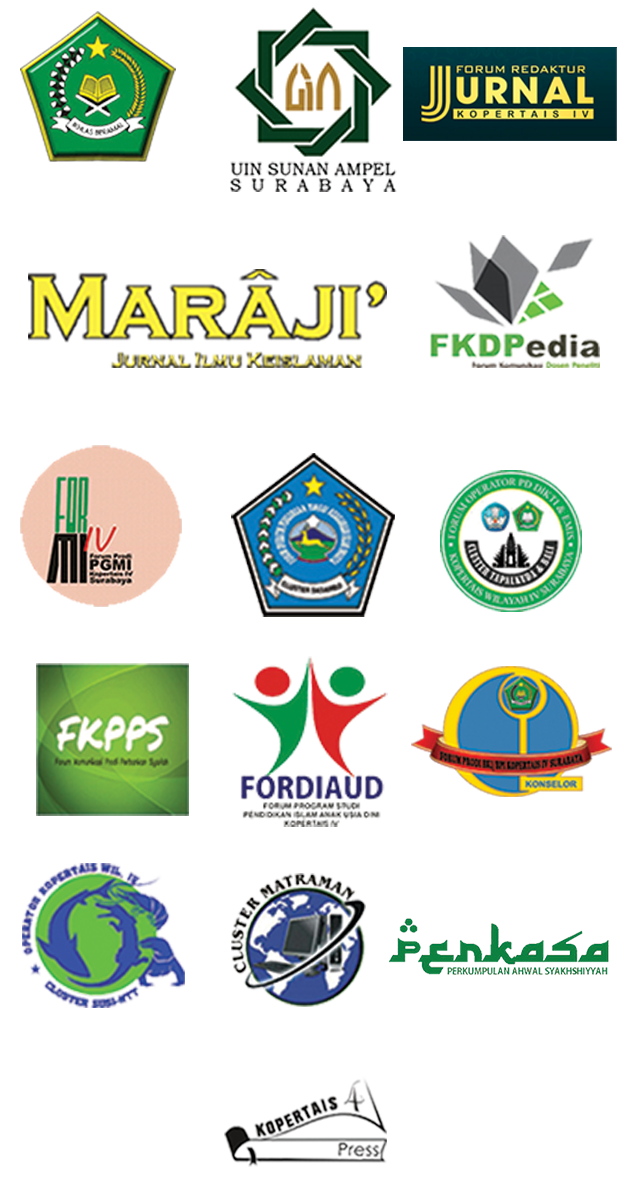Nasihat Al-Mulk: Pemikiran Politik Raja Ali Haji Perspektif Etik
Abstract
The image of a good ruler is always to meet the needs of his people and think about the life (fate) of his people. With this kind of leadership behavior, the people will be prosperous and peaceful and people always obey it because in the hearts of the people terpatri fame the wisdom of its leader leaders. In addition, a good ruler is not indulging his lust, avoiding disgraceful nature and attitude and avoiding unfavorable world life. Furthermore, Raja Ali Haji mentioned that the good ruler will build facilities and infrastructure in support of the achievement of the welfare of the community, reducing the occurrence of slander in society, religion maintained and custom preserved, education is noticed, law is enforced and the community is finally close to God.
In the section of Raja Ali Haji detailing the characteristics of a ruling ruler, which reigns with "whip" (iron hand), has a rough temperament and has no shame. In addition, the ugly ruler does not pay attention to the welfare and tranquility of his people, especially for the common people and the poor. The image of the ugly ruler is like indulging his lust, pursuing a less than decent world life. Furthermore, the sign of the ruler is not good is to ignore the construction of facilities and infrastructure of community life, religious life abandoned and customs and culture is not maintained and society is far from God.The image of the ruler is bad and is reflected in his attitude towards upholding the main principles of power. Principles of power referred to, as there is a small treatise Raja Ali Haji, Muqaddimah fī al-Intiẓām, consists of the principles of justice, the principle of deliberation, and the principle of equality. A good ruler will uphold justice, deliberation and equality among the people. On the contrary, bad rulers are unjust, authoritarian and discriminatory.
Downloads
References
Abdullah, Taufik, “Pemikiran Islam di Nusantara dalam Perspektif Sejarah: Sebuah Sketsa”, dalam Prisma, LP3ES, No. 3 Tahun XX Maret, 1991.
____________ , “The Formation of a Political Tradition in the Malay World” dalam Anthony Reid (ed.), The Making of an Islamic Discourse in Southeast Asia, Monash Paper on Southeast Asia – No. 27, Clayton, Victoria: Monash University, 1993.
Ali Haji, Raja, Kitab Pengetahuan Bahasa, Pekanbaru: Badan Penelitian dan Pengkajian Melayu Dept. P dan K, 1986.
_____________ ,Muqaddimah fī al-Intiẓām al-Wazāif al-Mulk Khusūsan ilā Mawlāna wa Ṣāḥibinā Yang Dipertuan Muda Raja Ali al-Mudabbir li al-Bilād al-Riauwiyyah wa Sāir Dāirat, Lingga: Pejabat Kerajan Lingga, 1304.
_____________ ,Silsilah Melayu-Bugis, Kuala Lumpur: Pustaka Antara, 1973.
_____________ ,Thamarāt al-Muhimmah, Lingga: Pejabat Kerajaan Lingga, 1304.
_____________ ,Tuḥfat al-Nafīs, Transliterasi oleh Inche Munir bin Ali, Singapura: Malaysian Publication Ltd., 1965.
_____________ ,Tuḥfat al-Nafīs, (ed.Virginia Matheson), Kuala Lumpur: Fajar Bakti, 1982.
_____________ ,Tuḥfat al-Nafīs (ed.Virginia Matheson), Kuala Lumpur: Yayasan Karyawan dan Dewan Bahasa dan Pustaka, 1998.
_____________ ,Syair Siti Sihanah, Pulau Penyengat: Yayasan Kebudayaan Indra Sakti, Koleksi Naskah No. A 13, 1983.
Ali, Abdullh Yusuf, Qur’an Terjemahan dan Tafsirnya [terj. Ali Audah] (Jakarta: Pustaka Firdaus, 1994)
Andaya dan Matheson, “Islamic Thought and Malay Tradition – Writing of Raja Ali Haji of Riau”, Perceptions of The Past in Southeast Asia, ed. Anthony Red dan David Marr (Singapura: Heineman Education Book [Asia] Ltd., 1979).
Azra, Azyumardi, Renaisans Islam Asia Tenggara: Sejarah Wacana & Kekuasaan (Bandung: Remaja Rosdakarya, 2000), 100-101;
____________ , “Syariat Islam dalam Bingkai Nation State “ dalam Komaruddin Hidayat dan Ahmad Gaus AF (ed.), Islam Negara & Civil Sosiety: Gerakan dan Pemikiran Islam Kontemporer (Jakarta: Paramadina, 2005), 40-41.
Sham, Abu Hassan, “Karya-karya yang Berlatarbelangan Islam dari Pengarang Melayu Riau-Johor Sehingga Awal Abad Kedua Puluh”, 249-252.
_____________ , Abu Hasan Sham, “Muqaddimah fi al-Intizam al-Wazaif al-Mulk Khususan Ila Maulana wa Shahibina Yang Dipertuan Muda Raja Ali al-Mudabbir li al-Biladi al-Riauwiyah wa Sairi Dairathih”, dalam Islamica, 1980.
Hadi W.M., Abdul, Sastra Sufi (Sebuah Antologi), (Jakarta: Pustaka Firdaus, 1985), Cet. I, 240 dan 296.
______________ , “Wawasan Sastra Hamzah Fanzuri dan Estetika Sufi Nusantara”, dalam Jurnal Kritik Teori & Kajian Sastra, Tahun 1, No. 1 (2011).
al-Ghazali, Al-Ṭib al-Masbūk fī Naṣḥiat al-Mulūk, Etika Berkuasa Nasehat-nasehat Imam al-Ghazali, terj. Arief B. Iskandar (Bandung: Pustaka Hidayah, 1988).
Matheson, Virginia, “Mahmud, Sultan Riau dan Lingga (1823-1864)”, Indonesia, 13 (April 1972), 123.
Matheson, Virginia, Tuḥfat al-Nafīs, Sejarah Melayu Islam, (Kuala Lumpur: Dewan Bahawa dan Pustaka, 1993), 398.
Taymiyah, Ibn, Siyasah Syar‘iyah Etika Politik Islam (Surabaya: Risalah Gusti, 2005), 228;
Khan, Qamaruddin, The Political Thought of Ibn Taymiyah, (Delhi: Adam Publishers & Distri Butors, 1992), 31-32.
Junus, Hasan, Raja Ali Haji Budayawan di Gerbang Abad XX, Pekanbaru: UIR-Pess, 2002.
Madjid, Nurcholish, “Menegakkan Faham Ahlu Sunnah Wal Jamaah “Baru”, ed. Haidar Bagir, Menuju Persatuan Umat: Pandangan Intelektual Muslim Indonesia (Bandung: Mizan, 2012), 47.
_____________, Pintu-Pintu Menuju Tuhan, (Jakarta: Paramadina, 1994), 44;
Shihab, M. Quraish, Wawasan Al-Qur’an (Bandung: Mizan, 1996), 480.









